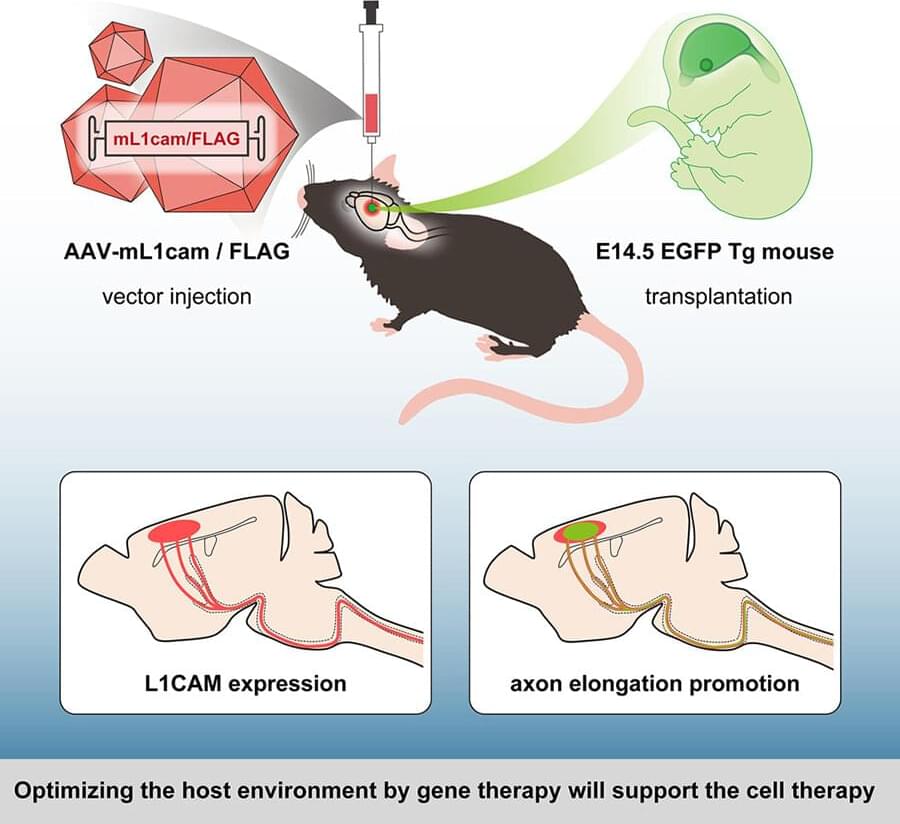A study published in the journal Stem Cell Reports on March 23, led by Dr. Ryosuke Tsuchimochi and Professor Jun Takahashi, examined the effects of combining cell transplantation and gene therapy for axonal outgrowth in the central nervous system. The authors demonstrated the potential of this combinatorial therapy for promoting axonal regeneration in patients with central nervous system injuries.
Stroke and traumatic brain/spinal cord injuries often damage the corticospinal tract (CST), composed of descending axonal tracts from the motor cortex down the spinal cord, that innervates motor neurons to activate skeletal muscles for controlling voluntary movements. Pharmacological and surgical interventions, in conjunction with rehabilitation, can maintain some lost motor functions, but patients with such acute neural injuries often suffer from lifelong severe motor impairment.
Cell replacement therapy—the implantation of new neurons into damaged brain regions —is viewed as a last hope that could help patients recover sufficient motor functions to live a normal life. The research team previously demonstrated that brain tissues transplanted into injured mouse brains could find their way to the CST and spinal cord but believed that further optimization of the host environment was necessary to promote CST reconstruction and functional recovery.










Comments are closed.